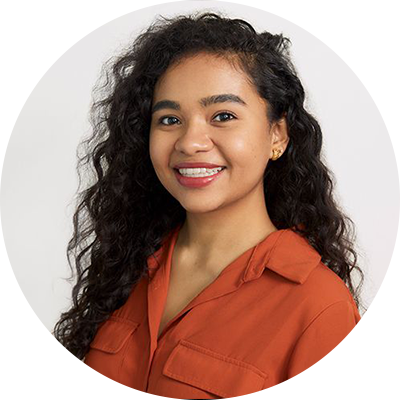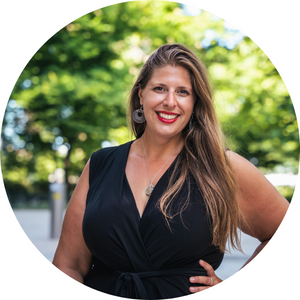Why super saving isn’t always the answer
Early on in her career, Merz decided to jump into FIRE — the financial independence, retire early movement, that gained popularity between 2014 to 2018.
The goal was to save as much money as possible in order to retire early and enjoy her savings later on. But with a fairly modest salary, starting at USD$65,000 a year, and saving as much as 75% of her income, Merz ended up severely affecting her quality of life.
With her savings, Merz purchased a single-family home that had been converted into a triplex and lived in the studio unit, while renting out the other two spaces.
Her monthly spend came to just USD$700 for the mortgage, taxes and other expenses, but she brought in more than USD$1,000 a month from just her rental income.
However, the studio unit was so small, she didn’t have any space to enjoy her hobbies, including quilting, for which she spent USD$3,800 on a sewing machine that was stowed away for 18-months.
“I was making money on it, but I was miserable and so unhappy and so stressed out the entire time,” she admitted. “I was like, ‘This is not worth it. This will never be worth it to me.’”
Merz didn’t have much luck in the dating pool either, with potential partners reluctant to match her lifestyle or balking at her opinions on their spending habits.
“That was one disadvantage — being single, and not being a crazy high earner, and not being able to bring in that much money,” she said. “It wasn't realistic.”
Empower your investments with Qtrade
Discover Qtrade's award-winning platform and take control of your financial future. With user-friendly tools, expert insights, and low fees, investing has never been easier.
Start Trading TodayMerz is prioritizing her mental health and making connections now
Merz was 27-years-old when she realized her lifestyle was unsustainable.
“Sure, my bank account balances were flourishing, but other areas of my life were starting to suffer… so I backed off,” she said. “What had served me at 24 was not serving me at 27 or 28 or 30.”
Merz decided she wasn’t willing to sacrifice on housing, and now looks at living in nicer places that are close to work or near a park or something else she enjoys.
One of the other big downsides to extreme budgeting was what it cost Merz in her career.
Merz explained that, when she was 25, she wasn’t planning on working that long, so she didn’t care too much about skipping out on happy hours or lunch with coworkers.
But networking comes into play when you’re up for a promotion or looking for a new job or a raise, and this is something she prioritizes now, especially as she no longer plans to retire early.
She’s decided to transition into Coast FIRE, and is confident she’ll have enough savings for when she does retire — even if that isn’t as soon as she’d originally planned.
Still, Merz said she doesn’t regret her choices, since they allowed her to save so much money in a short span of time.
“It's allowed me to take some more chances with my career, trying to find the right employer and the right niche for me,” she said. “It's okay if I have to move or if I take a little bit of [a] hit on income because I have these savings and I have a buffer, so I'm not stuck.”
How to get the most out of your savings
Use a savings calculator or other similar resources to help establish the amount of money you can comfortably stow away without sacrificing other important parts of life, including socialization and other responsible indulgences.
If you want to make the most of your savings, you can opt to put your money into either a Tax-Free Savings Account (TFSA) or a High-Interst Savings Account (HISA).
Tax-Free Savings Account
A TFSA shelters savings interest and investment earnings from being taxed, which makes it a great place to park your cash, GICs, mutual funds, securities and more. Each year, the Canadian government sets a maximum annual contribution amount for every Canadian 18 years of age and older. The annual maximums add up throughout your adult life, and if you don’t meet the maximum contribution in a given year you can always catch up later on. Here are some TFSA's to look at if you're interested in saving your money with this type of account:
Oaken Tax-free savings account: Oaken Financial offers TFSAs in the form of registered GICs. Interest rates range from 4.15% to 5.05%, depending on the term length selected, and require a CDN$1,000 minimum deposit. A TFSA with Oaken is a great option for those who are risk averse, as it offers a guaranteed return at a rate around or above inflation, and accountholders won’t be penalized if another bank eventually offers a more attractive TFSA deal and it’s preferable to switch.
- Term lengths: 1 year-5 years
- Fees: No fees for GICs
- Eligible for CDIC insurance
EQ Bank TFSA savings account: EQ Bank has expanded its offerings to include TFSA Savings Accounts to those with an existing EQ Bank Savings Plus Account. The interest rate on this account is 3.00%, which is the regular interest rate, not a promotional rate (interest is calculated daily on the total closing balance and paid monthly. Rates are per annum and subject to change without notice.) A TFSA Savings Account with EQ Bank is an excellent option for those looking to earn the maximum possible tax-free interest but want their assets liquid enough to access at a moment’s notice.
- Minimum deposit: None
- Eligible for CDIC Insurance
BMO TFSA Accounts: BMO’s TFSA interest rate is a comparatively low 0.05%, but those who are more comfortable working with a major bank might be willing to overlook that. BMO offers both TFSAs for basic cash deposits and for holding investments.
- Minimum deposit: CDNS$50
- Fees: CDN$50 for transferring to another institution
- Open an investment TFSA account online or at one of 900+ BMO branches throughout Canada; basic (cash) TFSAs can only be opened online.
High-Interest Savings Account
HISAs pay substantially more than traditional savings accounts, giving the funds you deposit the chance to grow. Calculated daily, the interest rate is applied to the entire balance in your account and is paid out monthly. Here are some HISAs to keep an eye on:
EQ Personal Account: EQ Bank's Personal Account currently has an interest rate of 2.50%, and a 4% interest rate when you set up direct deposits. There are no monthly fees or minimum balance to maintain. Account holders also have unlimited transactions and free electronic fund transfers, mobile cheque deposits and bill payments. Unlimited free Interac transfers are also included. There is, however, a maximum balance that your account can hold, which is now CDN$200,000.
Scotiabank MomentumPLUS Savings Account: With Scotiabank’s MomentumPLUS Savings Account, the longer you leave your money untouched, the more it will earn. The regular interest rate is 1.40%, on top of which you can earn a premium period interest rate of 0.85% for the first 90 days and increases up to 1.25% for leaving deposits untouched for 360 days. This makes it ideal for those medium-term goals like saving a down payment for a house, a vacation or a renovation.
- Promotional interest rate: 240% welcome bonus interest rate on eligible deposits for the first five months
Neo Money: The Neo High-Interest Savings Account offers the 4% interest rate, as well as unlimited free transactions, and no minimum deposit requirements. The offerings of this account are pretty basic compared to some of the competitors on the market, but Neo Financial could be a good choice if you have simpler needs.
Sources:
# *Business Insider*: "I saved $200,000 by the time I was 27, but I was miserable"
Sponsored
Trade Smarter, Today
Build your own investment portfolio with the CIBC Investor's Edge online and mobile trading platform and enjoy low commissions. Get up to $100 in commission-free options until October 31, 2024.






